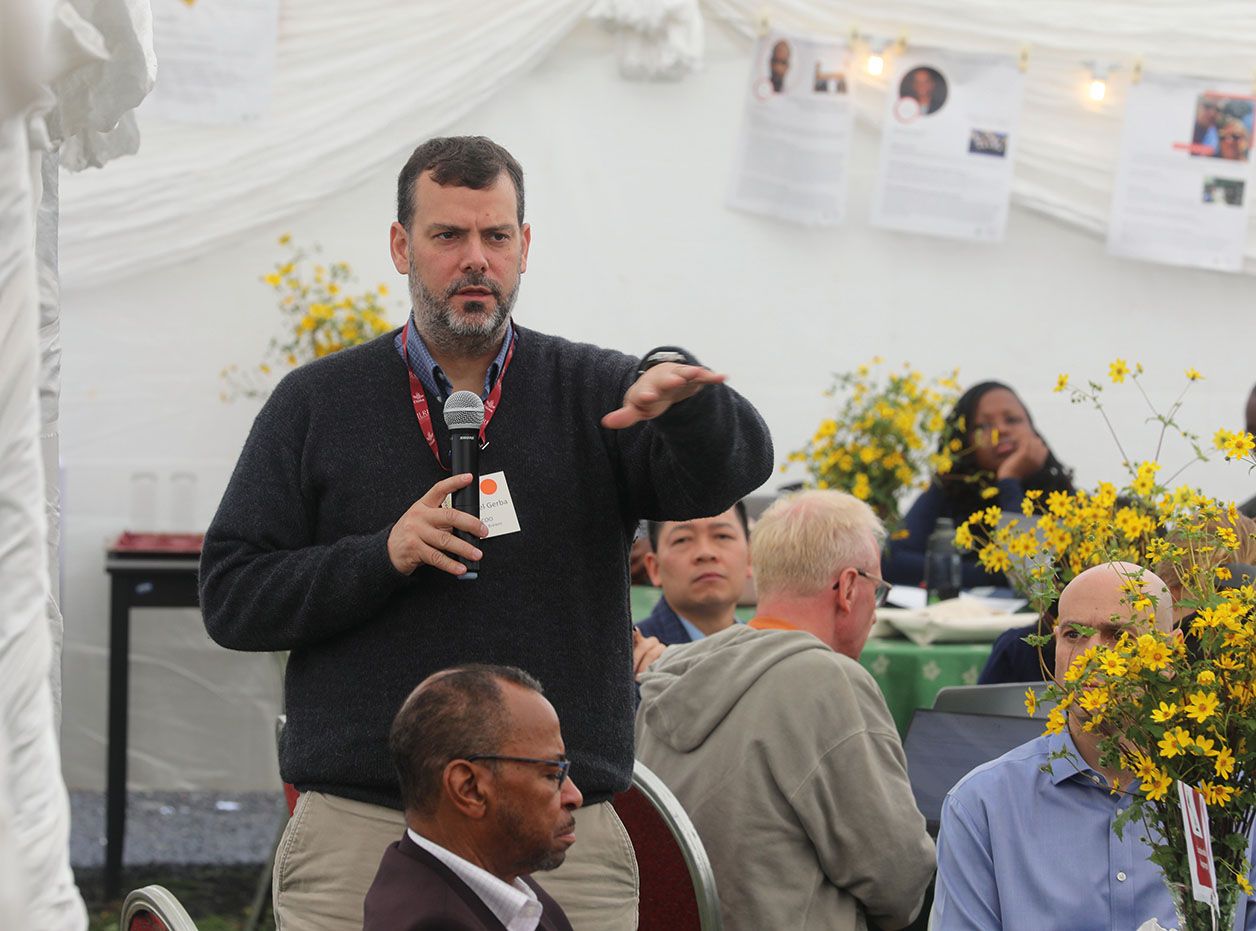British companies must act now to increase diversity within the workplace

John E. Kaye
- Published
- Executive Education, Home, Uncategorized

From boardrooms to management teams, British companies are falling far short of inclusivity targets. The social and commercial imperatives for diversity, however, can no longer be ignored, writes accomplished HR professional and diversity equality campaigner Anuranjita Kumar.
By Anuranjita Kumar
It was a bright, sunny morning as I headed to Canary Wharf on my first day in London. As I walked into the senior MD’s meeting , however, everything started to seem a bit grey. I found myself sat amongst 30 officious bankers – all men, all white and all in dark suits. It felt intimidating . Getting to here had taken immense effort, but the journey now seemed tougher. I added colour to that table from every perspective. As the lone coloured person around the able I felt lonely and vulnerable. My new colleagues weren’t, of course, aware of this as the unspoken rules of any given society are only visible to the minorities, the ‘outsiders’. What can we do to change this?
Diversity and inclusion within the UK’s corporate sector have been topics of intense debate for decades. Despite this, however, progress towards a more diverse boardroom has not only been slow but, more worryingly, seems to have taken a step backwards.
Sir John Parker’s independent ‘Beyond One by ’21’ review revealed that of the 1,087 director positions within the FTSE 100, only 87 (eight per cent) were held by directors of colour. Of these, only 1.5 per cent were UK citizens, even though people from BAME communities make up 14 per cent of the population.
Subsequently, this number had declined further to 84, contrary to the target recommended by the Parker Review to have at least one ethnic minority director on each FTSE 100 company board by 2021. Indeed, 50 per cent of the FTSE 100 firms did not have a single board director from an ethnic minority.
This is not only a problem at the top. A recent British Government racial disparity audit found that BAME representation in the 7,700 positions below the boardroom of FTSE firms has fallen to 5.7 per cent from 6.2 per cent just 12 months ago. While 22 per cent of college students identify themselves as budding BAME workforce, only 11 per cent are really found in workforce and 6.5 per cent in top management. As of date it does seem a BAME individual who may be at mid-level would have a 45 per cent less chance of getting to the board relative to a white peer.

Anuranjita Kumar is an accomplished HR professional and diversity equality campaigner. Picture copyright: Anuranjita Kumar, 2019
While it is axiomatic that British businesses should better reflect wider social diversity, the long-term commercial benefits of inclusivity are undeniable. Research by global management consulting firm McKinsey in 2017, for instance, revealed that companies with more ethnically diverse executive teams are a third more likely to outperform on EBIT (earnings before interest and taxes) relative to companies in the bottom quartiles of such diversity. McKinsey further found that companies with more ethnically diverse boards are 43 per cent more likely to outperform those that are not.
Baroness McGregor-Smith’s 2018 ‘Race in the workplace’ review, meanwhile, found that the discrimination faced by BAME employees in securing workplace opportunities because of the colour of their skin results in a loss to the British economy equivalent to 1.3 per cent of annual GDP. If these barriers to progression could be removed, the report continues, then the economy could enjoy an annual £24bn boost.
WHAT ARE THE BARRIERS?
To start with, let us agree that it is OK to talk about ethnicity and racism topics in the workplace. This assurance is, sadly, needed as too often the topic of race is perceived as a taboo and individuals dwelling on it are considered trouble-makers, leading to unaddressed and unresolved issues.
In my experience, these are the main barriers that BAME professionals face in trying to rise up the career ladder.
Embedded Unconscious bias: We grow up with certain beliefs, often passed on by others, that we hold on to and which we use to gauge the world, even though the reality may be different. A 2016 Equality & Human Rights (EHRC) Commission inquiry found that only 13 per cent of FTSE 100 companies provided training on equality law and unconscious bias to the board and those involved in appointments. Almost a third (32 per cent) of businesses, meanwhile, continue to rely on personal networks to identify leadership candidates. Sensitisation and mind-set change is critical towards creating an inclusive environment.
Lack of Role Models: A lack of role models makes it tougher for aspiring BAME professionals to break the glass ceiling. It leads to gaps about what a person of colour should do, or not do, to get to the top. It also sends an implied message that the path to the top may not be easy. There are plenty of skilled individuals in the community and the younger generation needs to feel that they can aspire to contribute and succeed in business. The absence of diverse leaders, however, is a significant demotivator, with its subtle message derailing the potential younger diverse leaders of tomorrow.
Lack of sponsorship: Leadership and culture have a crucial role in supporting diversity within the upper echelons of companies, so to have a lack of consistent and authentic sponsorship is an impediment. Often the diversity KPIs are documented by a corporation but not met as the commitment on the agenda does not have full sponsorship, thereby diluting the efforts. This is evident in the declining number of BAME professionals in senior roles, or the lack of a diverse workforce across all levels. Wider cultural issues among many companies, such as a state of ‘denial’ about the extent of race-based barriers to progression, are likewise real problems.

According to Anuranjita Kumar, change must come from the top to build more diverse boardrooms and management teams. Picture copyright: Anuranjita Kumar, 2019
SOLUTIONS
So, what can be done? The first step towards change is to accept the need for change. With real commitment ,positive change can be brought about in a defined time frame. An environment that nurtures talent across communities, is accepting of diverse ways of working and willing to experiment with changing mindsets, can reap huge benefits.
Commitment from the Top: This is critical, as nothing else will work unless leaders demonstrate their commitment with action. They need to set the right expectations, hold senior and middle management accountable and help identify role models. The strong connect between a racial inclusion agenda and wider corporate business goals needs to be fully understood and embraced by leaders. This will help ensure balanced decision-making and actions, encouraging a diversity of talent. The KPIs that follow can then be tailored to individual cities and countries to ensure they are realistic and achievable.
Targets: Roles within a company should always be staffed with people who are the worthiest of those positions, regardless of ethnicity. However, the question is on what basis are key attributes for those roles set. As data shows, there are enough qualified and able BAME candidates available, but their access to these roles is tougher. The way forward is probably not quota driven. As many researchers have pointed out, quotas lead to a backlash from the majority community and, therefore, to undesired and counterproductive outcomes . The focus needs, instead, to be on removing barriers and embedded disadvantages by setting clear targets that must be achieved.
Review Processes and Track metrics: Companies must focus on making key processes like recruiting, progression, and recognition bias-proof to the extent possible. This requires a careful review of the criteria used for assessment as well as the installation of diverse selection panels, among many other measures. Further, these processes need to be tracked regularly to gauge if they are, indeed, yielding the outcomes as intended: to attract and develop the best candidates, with the definition of ‘best’ being an inclusive one. A transparency of such process is equally important, as this builds trust within the BAME community.
Sensitisation: Open minds can bring about a deeper level of understanding that fosters trust and collaboration. However, the social environment around us can shape mindsets to believe certain perceptions (either positive and negative) that, if left unchallenged, grow into biases. People then make decisions based on these unspoken biases without ever really testing them. Negative attitudes towards race is such a bias but sensitivity training helps counter this by bringing unconscious biases to the fore, so that they can be addressed. In other words, it helps people to re-examine their belief systems so that their outlooks are more real and authentic . This leads to a greater appreciation of diverse worldviews and the mutually beneficial results within a team, department and company that springs from cultivating this wider perspective.
Network of support: Formal and informal networks can be invaluable in providing the necessary support to the BAME workforce, especially in the absence of senior role models. Simple conversations, peer mentoring, and training can all boost the confidence levels of professionals from ethnic minorities, leading to an enhanced sense of empowerment and security. It has been shown that even without overt discrimination, there is still often a lingering bias in the corporate system. That needs to be uprooted to eliminate any disadvantage to any group. An open dialogue within the network that can help guide the minority group whilst helping to correct the perceptions of the majority group can be invaluable.

Sign up to The European Newsletter
RECENT ARTICLES
-
 ETH Zurich and the University of St.Gallen redefine executive education with emba X, a new model of responsible leadership
ETH Zurich and the University of St.Gallen redefine executive education with emba X, a new model of responsible leadership -
 Why leadership is the strongest defence in South Africa’s schools
Why leadership is the strongest defence in South Africa’s schools -
 Porto Business School launches executive programme on AI strategy
Porto Business School launches executive programme on AI strategy -
 POLIMI Graduate School of Management strengthens global reputation in MBA and master’s rankings
POLIMI Graduate School of Management strengthens global reputation in MBA and master’s rankings -
 Trinity Business School strengthens standing in global MBA rankings
Trinity Business School strengthens standing in global MBA rankings -
 Meet the class of 2025… and their children. Why mid-life university learning is on the rise
Meet the class of 2025… and their children. Why mid-life university learning is on the rise -
 University of Michigan launches executive programme for chief data and AI officers
University of Michigan launches executive programme for chief data and AI officers -
 International education: A vision for global citizens
International education: A vision for global citizens -
 How to create lasting social change? Build a community
How to create lasting social change? Build a community -
 Tomorrow’s world needs Dyslexic Thinking
Tomorrow’s world needs Dyslexic Thinking -
 Why family therapy is the best investment you can ever make
Why family therapy is the best investment you can ever make -
 How EQ can give us the edge over AI
How EQ can give us the edge over AI -
 A true root and branch approach
A true root and branch approach -
 It's fine to say you're not ok
It's fine to say you're not ok -
 Are you willing to change with your organisation?
Are you willing to change with your organisation? -
 Emerging markets: Online learning for women unlocks economic potential
Emerging markets: Online learning for women unlocks economic potential -
 A programme of urgent importance
A programme of urgent importance -
 Why progress is not parity
Why progress is not parity -
 Begin by building trust
Begin by building trust -
 Have we the energy for cryptocurrencies?
Have we the energy for cryptocurrencies? -
 Make your employees everyday data scientists
Make your employees everyday data scientists -
 The power of understanding
The power of understanding -
 Welcome to the team
Welcome to the team -
 Become your best self with Gies
Become your best self with Gies -
 The benefits of seeing the bigger picture
The benefits of seeing the bigger picture



























